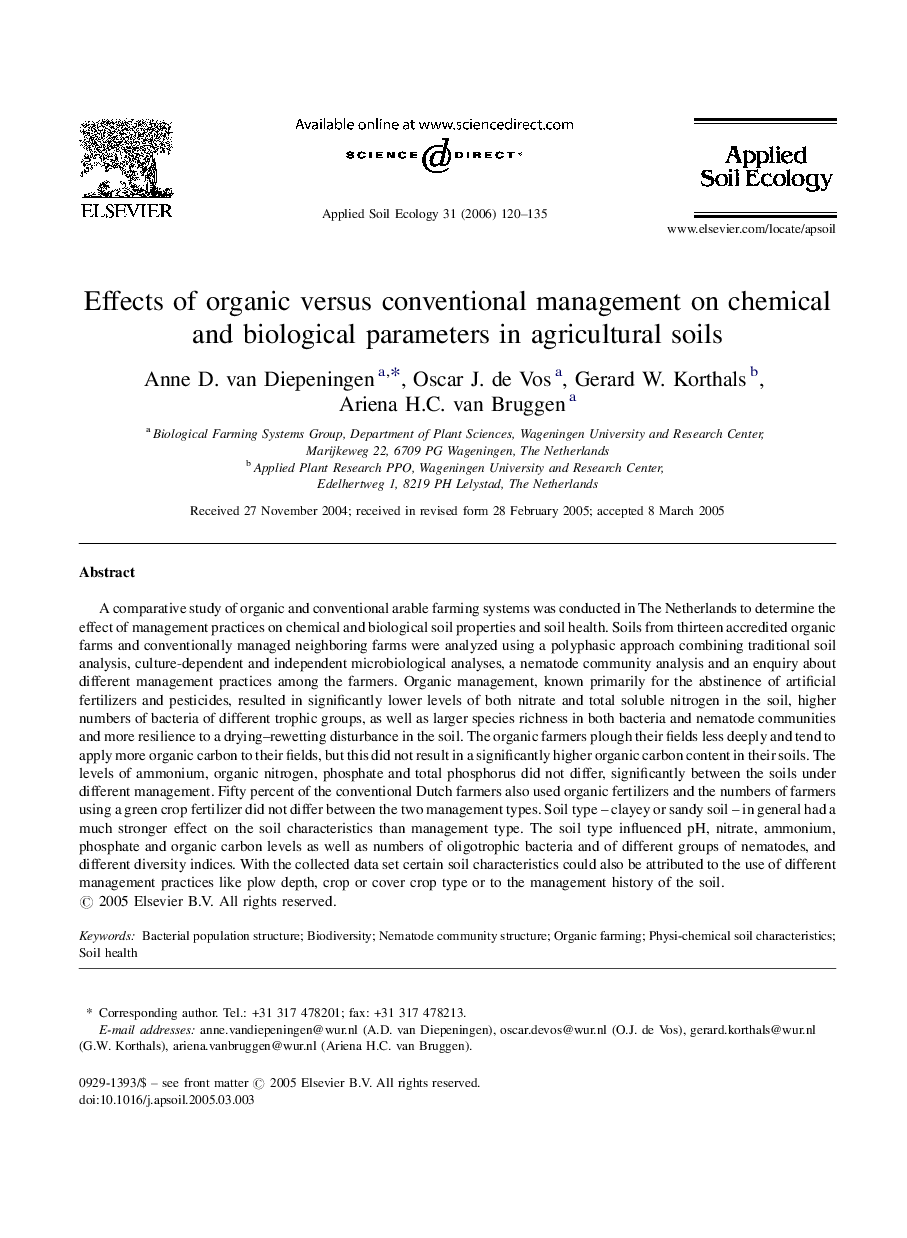| کد مقاله | کد نشریه | سال انتشار | مقاله انگلیسی | نسخه تمام متن |
|---|---|---|---|---|
| 4383493 | 1617840 | 2006 | 16 صفحه PDF | دانلود رایگان |

A comparative study of organic and conventional arable farming systems was conducted in The Netherlands to determine the effect of management practices on chemical and biological soil properties and soil health. Soils from thirteen accredited organic farms and conventionally managed neighboring farms were analyzed using a polyphasic approach combining traditional soil analysis, culture-dependent and independent microbiological analyses, a nematode community analysis and an enquiry about different management practices among the farmers. Organic management, known primarily for the abstinence of artificial fertilizers and pesticides, resulted in significantly lower levels of both nitrate and total soluble nitrogen in the soil, higher numbers of bacteria of different trophic groups, as well as larger species richness in both bacteria and nematode communities and more resilience to a drying–rewetting disturbance in the soil. The organic farmers plough their fields less deeply and tend to apply more organic carbon to their fields, but this did not result in a significantly higher organic carbon content in their soils. The levels of ammonium, organic nitrogen, phosphate and total phosphorus did not differ, significantly between the soils under different management. Fifty percent of the conventional Dutch farmers also used organic fertilizers and the numbers of farmers using a green crop fertilizer did not differ between the two management types. Soil type – clayey or sandy soil – in general had a much stronger effect on the soil characteristics than management type. The soil type influenced pH, nitrate, ammonium, phosphate and organic carbon levels as well as numbers of oligotrophic bacteria and of different groups of nematodes, and different diversity indices. With the collected data set certain soil characteristics could also be attributed to the use of different management practices like plow depth, crop or cover crop type or to the management history of the soil.
Journal: Applied Soil Ecology - Volume 31, Issues 1–2, January 2006, Pages 120–135